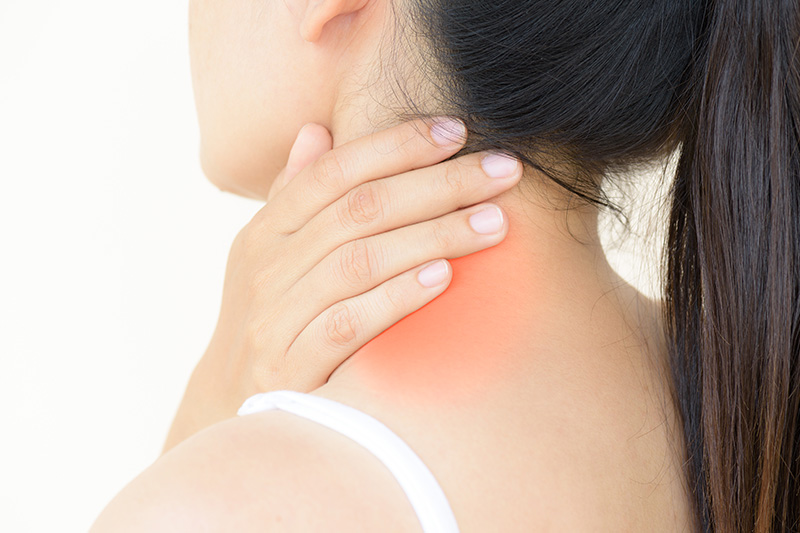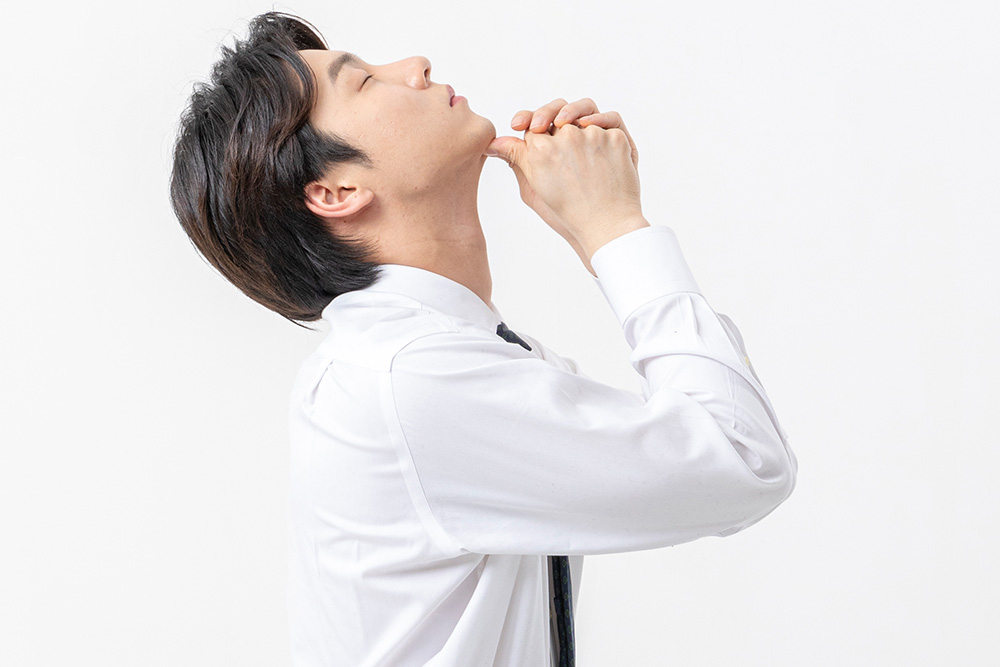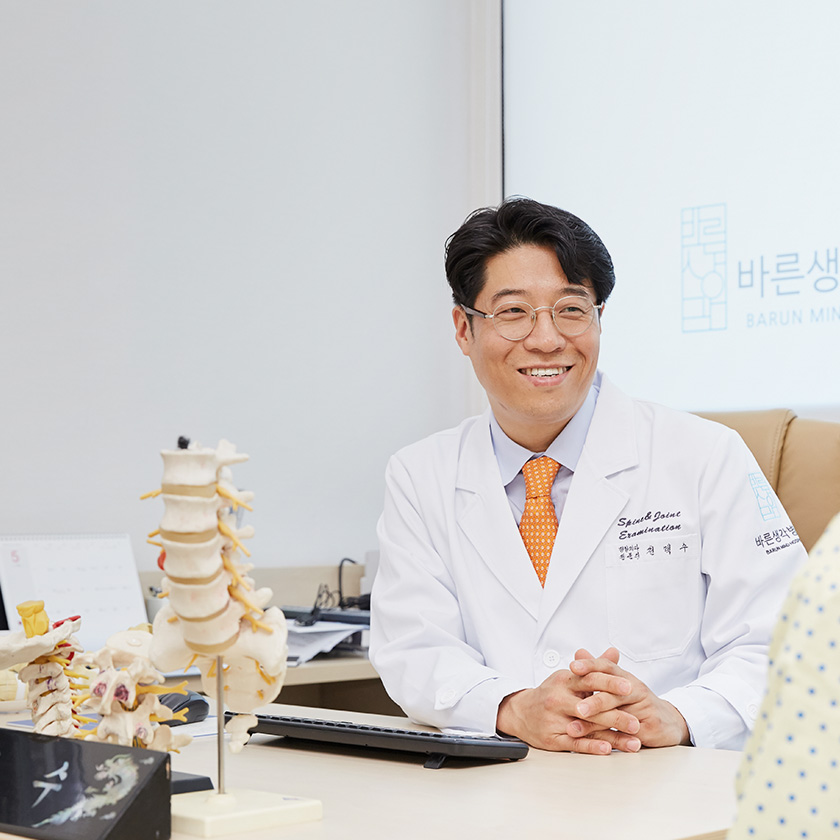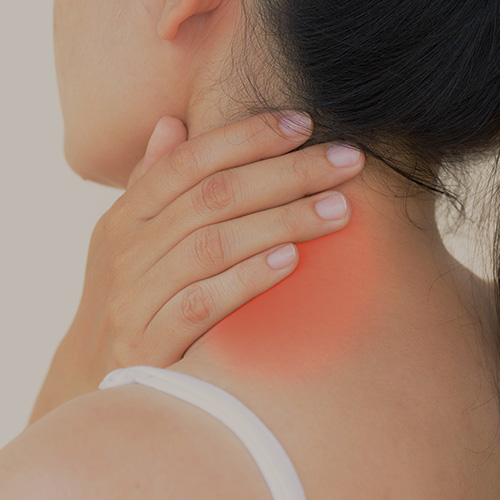Cervical Disk Herniation Caused by Smartphone Use?
There has recently been a sharp rise in cases requiring medical attention due to excessive smartphone use, especially among those in their 20s suffering from cervical disk herniation as a result of staring into their smartphones all day. Using the smartphone for an extended period of time, especially while maintaining a poor posture, can strain the cervical disks and cause herniation.
The Problem Is in the Neck But Symptoms Occur in the Shoulders and Limbs?
Those with herniated cervical disks complain of numbness or a tingling sensation in the shoulders and/or fingers, frequent aches in the muscles around the neck that prevent them from getting a good night’s sleep, or an unpleasant tingling sensation or jolts in the arms when they move their necks in a certain way. As such, most of these patients experience pain in the shoulders, shoulder blades, and/or spine area between the shoulder blades. When the condition progresses, the patient will be unable to move their neck, and in serious cases, the patient will be unable to raise their arms, become paraplegic, or suffer changes in the brain. Other symptoms include dizziness, reduced vision, and severe ringing in the ears.
These days, a large number of people complain of pain in the neck, as they maintain an uncomfortable posture to play games, watch a movie, or read a book on their smartphones. For those of you aged 30 or above, if you are experiencing pain in the neck, tingling sensations in your arms, and loss of strengthen in your limbs, you have a reason to suspect cervical disk herniation.
The Cause: Poor Posture That Puts a Strain on the Neck
Using a high-loft pillow can strain the neck. There are also a number of other things we do on a daily basis that may put on a strain on the neck. For example, keeping the head and neck forward while sitting at the desk for long hours or moving the head forward to read something that is difficult to see due to poor eyesight can lead to cervical disk herniation. Also at risk are those who find it difficult to maintain a proper posture because they are overweight, those who have a difficulty maintaining a balance because they have flat feet or are wearing shoes that do not fit their feet properly, and those who have suffered a neck injury involving the bones or joints in a car accident or from a direct physical impact.
People who are constantly under stress, who work on the computer for hours, who use the smartphone for an extended period of time, who carry a heavy load on the shoulder, like construction workers, or who have to keep lowering their heads for manual labor often complain of their shoulders feeling heavy as well as tension in the back of the neck and pain in the shoulders and arms. In this case, myofascial pain syndrome (MPS) may be suspected. If symptoms persist even after posture correction, rest, injections into the pain sites, etc., cervical disk herniation may be suspected. In such cases, the doctor will check for problems in the cervical spine in terms of shape and arrangement on an X-ray scan following a neurological examination and, if deemed necessary, order a CT or MRI scan.
Maintaining a Good Posture Is the Best Solution
In order to prevent cervical disk herniation, it is recommended that you stretch and do light exercises where you tilt your head back. Scientifically speaking, the most ideal loft for a pillow is the height allowing muscle relaxation and excellent blood circulation, which is around 6 to 8 cm. It is best to sleep on the back (supine position), instead of on the chest (prone position) and to keep the cervical and thoracic vertebrae straight. If you lie on the side, the pillow should be somewhat higher. If you have to work at your desk for long hours, place the monitor at your eye level or a bit higher and make sure that your wrists can be kept straight when you type on the keyboard. It is also strongly recommended to lower the chin and raise the head to reduce the curve in front of the neck. Avoid using the smartphone or the computer for long hours and take a 10-min break every hour.
Source: Health Column published by Daejeon Eulji Medical Center, Eulji University │ Dr. Park Ki-seok (Neurologist)





 Specialized Medical Service
Specialized Medical Service
 Bio Technology
Bio Technology
 Health & Wellness
Health & Wellness
 City & Culture
City & Culture
 Hot Issue
Hot Issue
 Interview With
Interview With
 Medical Technology
Medical Technology
 City & Culture
City & Culture
 Food & Travel
Food & Travel
 Health & Wellness Tips
Health & Wellness Tips
 Hot Issue
Hot Issue